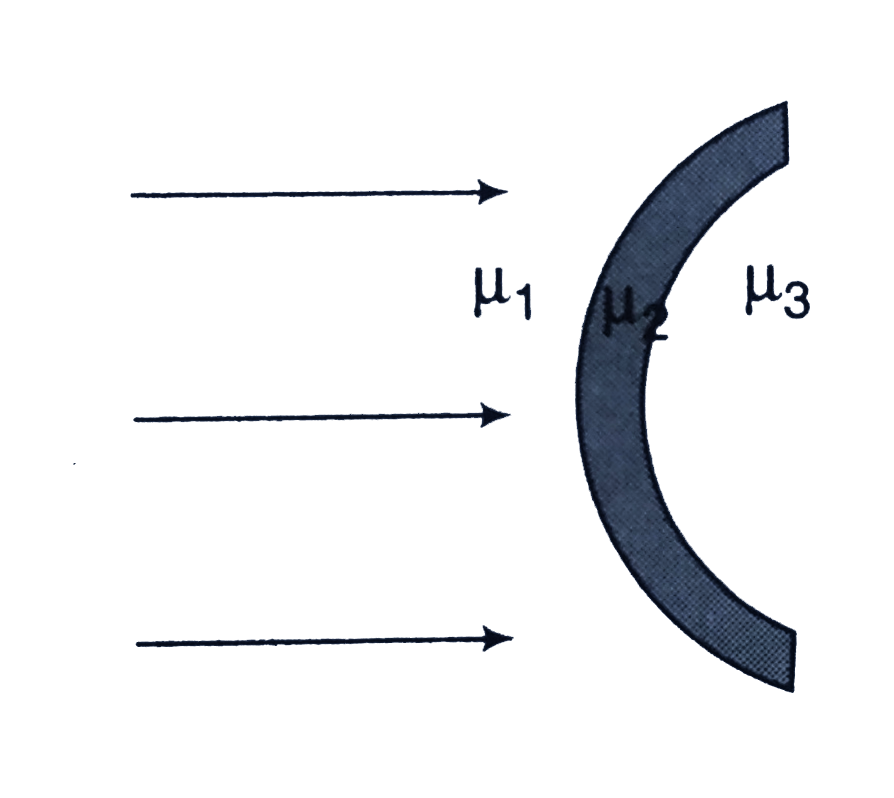Which lens has both the surfaces as concave
bi-convex
bi-concave
plano-convex
plano-concave
The correct Answer is:B
To solve the question "Which lens has both the surfaces as concave?", we can follow these steps:
Step 1: Understand the types of lenses
Lenses can be classified based on the shape of their surfaces. The primary types include:
1. Biconvex Lens: Both surfaces are convex.
2. Biconcave Lens: Both surfaces are concave.
3. Pleno-convex Lens: One surface is plane and the other is convex.
4. Pleno-concave Lens: One surface is plane and the other is concave.
Step 2: Analyze the options
Now, we will analyze each option given in the question:
- Biconvex Lens: Both surfaces are convex. (Not the answer)
- Biconcave Lens: Both surfaces are concave. (This is a potential answer)
- Pleno-convex Lens: One surface is plane and the other is convex. (Not the answer)
- Pleno-concave Lens: One surface is plane and the other is concave. (Not the answer)
Step 3: Identify the correct answer
From the analysis, the only lens that has both surfaces as concave is the Biconcave Lens.
Conclusion
Thus, the answer to the question is Biconcave Lens.
---
Lenses can be classified based on the shape of their surfaces. The primary types include:
1. Biconvex Lens: Both surfaces are convex.
2. Biconcave Lens: Both surfaces are concave.
3. Pleno-convex Lens: One surface is plane and the other is convex.
4. Pleno-concave Lens: One surface is plane and the other is concave.
Now, we will analyze each option given in the question:
- Biconvex Lens: Both surfaces are convex. (Not the answer)
- Biconcave Lens: Both surfaces are concave. (This is a potential answer)
- Pleno-convex Lens: One surface is plane and the other is convex. (Not the answer)
- Pleno-concave Lens: One surface is plane and the other is concave. (Not the answer)
From the analysis, the only lens that has both surfaces as concave is the Biconcave Lens.
Thus, the answer to the question is Biconcave Lens.
Topper's Solved these Questions
- REFRACTION THROUGH LENSBOOK - ICSECHAPTER - REFRACTION THROUGH LENSEXERCISE - NUMERICAL BASED MCQ:
10 Videos
- REFRACTION THROUGH A LENS BOOK - ICSECHAPTER - REFRACTION THROUGH A LENS EXERCISE - EXERCISE-5(D) (MULTIPLE CHOICE TYPE)
2 Videos
- SAMPLE PAPER -4 BOOK - ICSECHAPTER - SAMPLE PAPER -4 EXERCISE - Questions
36 Videos
Similar Questions
Behind a thin converging lens having both the surfaces of the same radius 10cm, a plane mirror has been placed. The image of an object at a distance of 40 cm from the lens is formed at the same position. What is the refractive index of the lens?

View SolutionA double convex lens has power P and same radii of curvature R of both the surfaces. The radius of carvature of a surface of plano-convex lens made of the same meterial with power 1.5 P is :
View SolutionThe radii of curvature of the two surfaces of a lens are 20 cm and 30 cm and the refractive index of the material of the lens is 1.5. If the lens is concave -convex, then the focal length of the lens is
View SolutionThe radii of curvature of the two surfaces of a lens are 20 cm and 30 cm and the refractive index of the material of the lens is 1.5. If the lens is concave -convex, then the focal length of the lens is
View SolutionA concave lens of glass, refractive index 1.5, has both surfaces of same radius of curvature R. On immersion in a medium of refractive index 1.75, it will behave as a
View SolutionIn the figure, light is incident on a thin lens as shown. The radius of curvature for both the surfaces is R. Determine the focal length of this system.

View SolutionFind the focal length of the lens shown in Fig . The radii of curvature of both the surfaces are equal to R.

View SolutionA double convex lens has two surfaces of equal radii R and refractive index m=1.5, we have
View SolutionAssertion:A convex lens and a concave lens are kept in contact. They will behave as a diverging lens if focal length of convex lens is more.
Reason: Power of a concave lens is always less than the power of a convex lens, as power of concave lens is negative whereas power of convex lens is positive.
View SolutionA convex lens of focal length 1 meter and a concave lens fo focal length 0.25 meter and kept 0.75 meter apart. A parallel beam of light first passes through the ocnvex lens, then through the concave lens and comes to a focus 0.5m away from the concave lens.
View Solution
